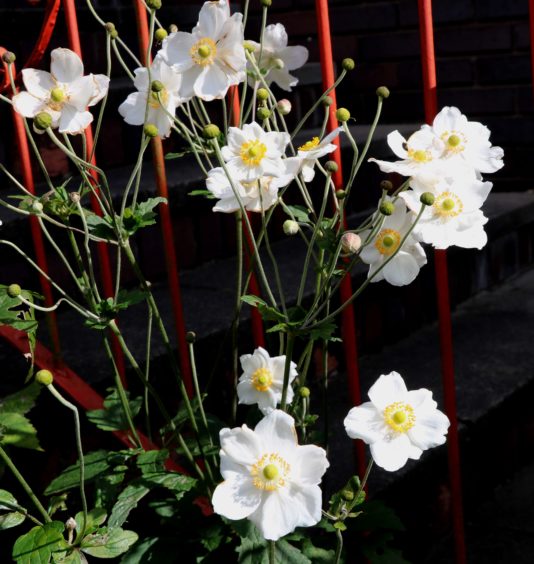The garden is beginning to go into its autumn phase as berried plants such as the rowan, and cotoneasters are starting to steal the show and summer flowers start to fade away.
Although the summer has been warm, there has been so much rain that flowers have been sulking a bit so the wee bit of warm weather in the middle of September was very welcome.
All of a sudden the flowers decided to go out in a blaze of glory and the garden lit up with dazzling displays of colour.
Begonias, petunias, lobelia, Impatiens and geraniums in tubs and hanging baskets sent out a bright display of flowers that we normally see in mid summer but they had been held back by constant wet weather.
Geraniums were looking very weak with poor growth in summer and I was left wondering if I would be getting enough young shoots for my autumn cuttings to overwinter, but now both growth and flowers are back to normal.
However a few tuberous begonias were not too happy with the wet summer as they wilted and died, though the rest are all full of flowers, but as I bought my tubers well over 20 years ago, maybe it was old age.
Some Impatiens (Busy Lizzies) were getting crowded out in tubs and baskets due to excessive growth of other bedding plants, but others are a mass of colour and I can see that I will still be able to get plenty of cuttings in the next few weeks to grow plants to flower in the house as well making young plants for next year.
Californian poppies are having a revival and make a great drift around the outdoor fuchsia, up at City Road allotments and pansies planted in our large communal flower border to create some spring colour, must be enjoying the new border as they have been a mass of colour the whole year.
The council gave us a huge trailer load of Discovery compost to help establish this flower border and this seems to have helped our brilliant show of pansies.
On the allotment plot plants grown for cut flower such as chrysanthemums and dahlias have never been better and may well keep going for many more weeks, but gladioli are now all finished and sweet peas are also well past their best.
Roses have struggled this year as both mildew and blackspot infestations have been very serious and as soon as any young shoot appeared it was a target for the plagues of greenfly.
Some spraying and pruning away infected shoots has been necessary so we are hoping for a late display of colour.
The white Anemone Honorine Jobert and pink Nerine bowdenii always put on a great display at the beginning of autumn no matter what weather is thrown at them.
The Nerine grows from spring till the end of summer then just as the leaves start to die down the flowers appear in a large drift of brilliant pink blossom.
Down at ground level my Cyclamen hederifolium is in full flower.
It shares the ground with the spring flowering Aconites but as both grow and flower at different times they work well together.
The Cyclamen flowers ahead of any foliage (opposite to the Nerines) then as they begin to fade the leaves appear and remain till the end of winter, and just as the Aconites appear and need the space the cyclamen leaves die down; very convenient.
Calluna H E Beale is a great late summer/early autumn heather with very bright pink flowers.
I have always grown this plant since I first came across it about 40 years ago, and once established it is perfect for keeping weeds away as the foliage is so dense.
At home it is the phalaenopsis orchid that catches the eye and this year it has one stem with nearly thirty flowers all out at the same time.
It gets watered once or twice every week and is kept in a light place but away from direct sunlight otherwise damage may occur to the leaves.
Wee jobs to do this week
Looking ahead to the festive season now is a good time to sort out some plants for flowering at Christmas.
Poinsettias and cyclamen are always in plentiful supply in supermarkets nearer the time, but most people like the challenge of getting an Amaryllis bulb and getting it to flower for Christmas.
Now is the time to pot them up in the smallest pot and leave at least half the bulb above the compost. Keep it on a sunny windowsill and keep it watered. It may need staking if it grows tall.
















